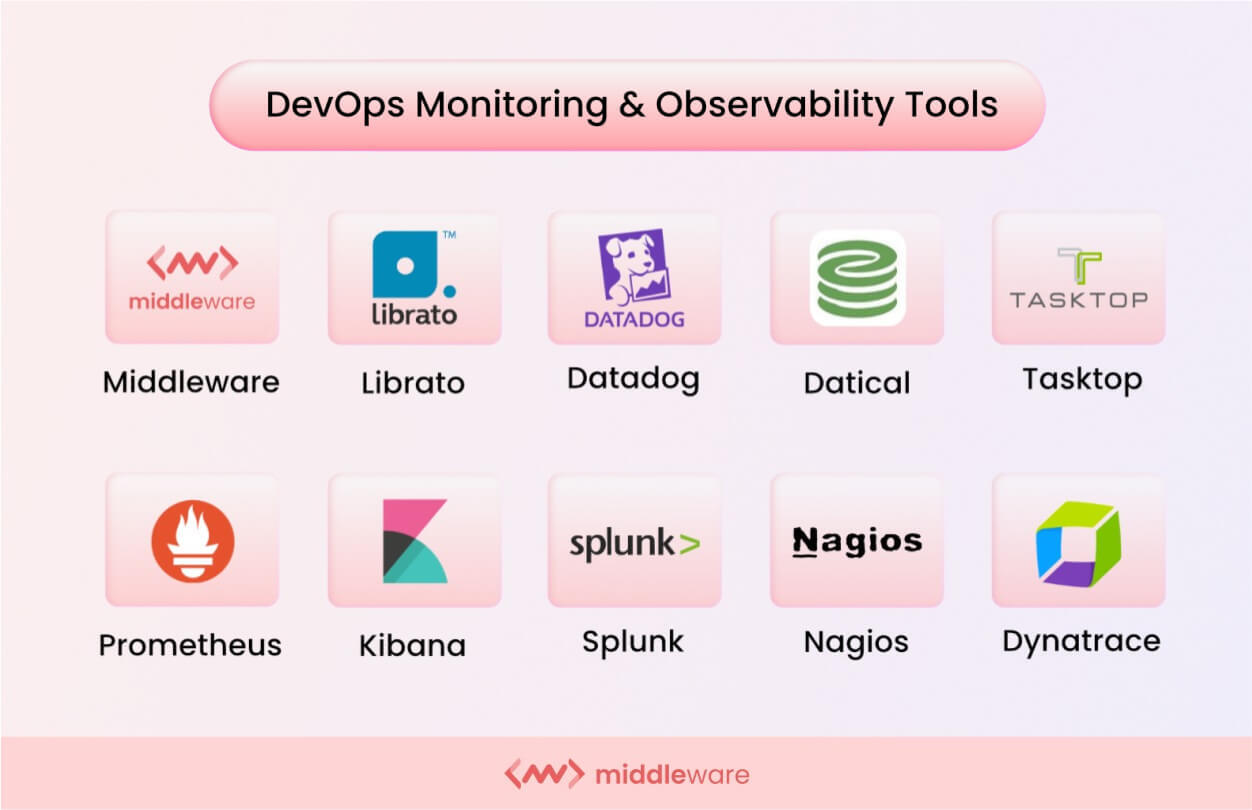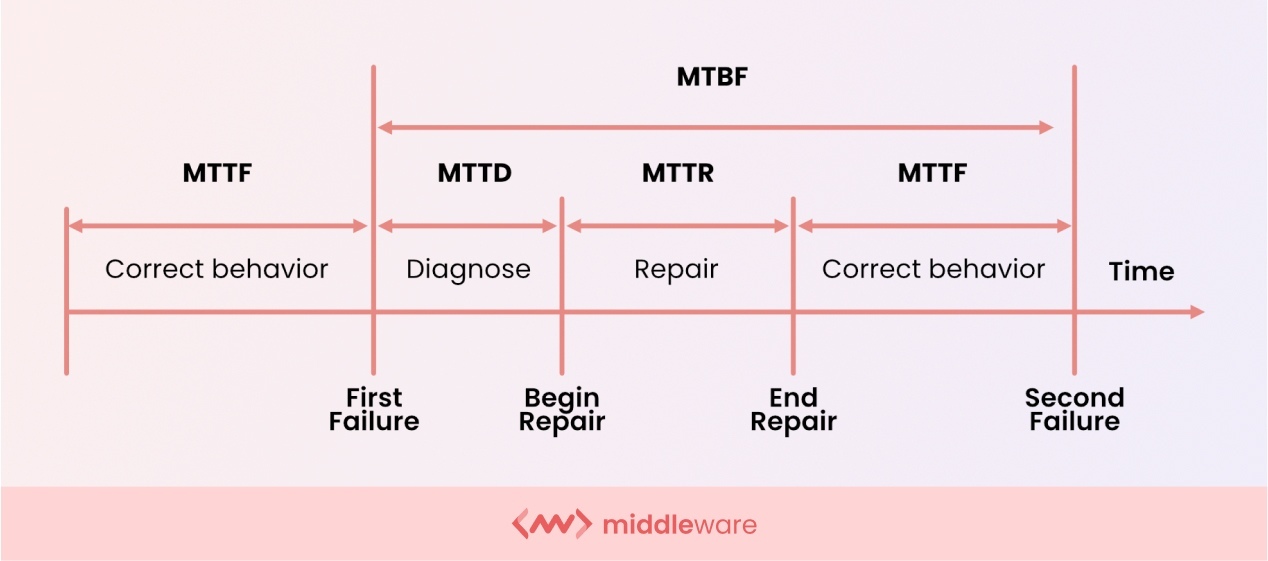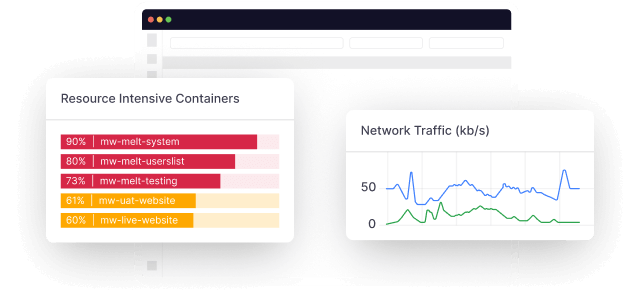According to data from the latest IT spending reports, SaaS companies spend 18% of their total revenue on IT. The number is 11% for Tech hosting/cloud companies. That’s why reducing IT costs is vital in 2023.
Observability is the key that can help businesses reduce their IT spending.
So, What is observability? And how to reduce IT Costs with observability?
Observability, as we all know, is the ability to identify a system’s internal state based on the data from its external state.
We’ll answer the second question by breaking it down into seven ways to use observability to reduce costs while improving uptime, data transparency and analytical power. Continue reading for more!
Observability and IT costs- An Overview
Many enterprises are under pressure to cut IT costs.
According to a recent survey by Gartner, an average enterprise will spend 5.1 percent of its IT operations and maintenance (O&M), with an estimated 11.3 percent going toward software licenses.
That’s a significant portion of the overall budget that can be put to better use elsewhere. Fortunately, there are ways to reduce IT costs through observability.
7 Ways To Reduce Costs With Observability
You may have heard about observability from people discussing monitoring, logging and metrics. While those are all critical parts of observability, it’s more than just the tools used to capture data.
It’s also about how you use that data to decide about your services, applications and infrastructure.
By using the following observability techniques mentioned below, you can reduce costs:
1. Building an Agile development culture
With observability tools, you can quickly identify and reduce unnecessary resource use (e.g., CPU) that affects performance before it affects users or applications.
For example, if an application runs on a server that needs only 50% of its CPU but currently uses 100%, this could be due to an inefficient algorithm or lousy code.
By identifying this kind of problem early on, you can optimize your code and prevent future performance issues from arising.
The ability to respond quickly to changing business needs is critical for any software company. If your application stops working at any moment, it may cause huge losses for your company and your clients and partners.
For example, with observability tools, you can easily monitor how your system behaves from start to finish without writing a single line of code or restarting your app every time it crashes unexpectedly.
You can also see how long each request takes from beginning to end, so you’ll know exactly what’s going wrong if there’s any problem with an endpoint or microservice.
2. Reduce the need for multiple observability tools
Using one centralized platform for managing all your applications and infrastructure allows you to get a holistic view of the health of your entire system.

This is especially important regarding security incidents because they can happen anywhere in the system.
Once you’ve got everything in one place, you can quickly identify problems and take action before they turn into serious issues that impact customer experience or business operations.
Grafana Labs’ latest Observability 2023 report claims, “Centralized observability saves other teams from having to build their own monitoring infrastructure.”
With a single, centralized observability tool like Middleware, you can get all the data you need in one place: logs, traces and metrics.
Middleware lets you collect data from all over your stack — from microservices and containers to message queues and databases — so that you don’t have to use separate tools for each part of your application stack.
Middleware helps you reduce the need for multiple cloud monitoring tools by providing visibility into all aspects of your infrastructure. It is a powerful observability platform that offers insights into your applications, servers, containers and networks.
3. Decrease data storage costs
In today’s zero-downtime world, you need to know how your systems perform and if they meet their SLAs (service-level agreements).
But, it possesses a key challenge, data and the associated cost behind handling, storing, and reading the data.
Yes, having observability data is important and a general observability best practice. But, only storing the data which matters to you can help reduce cost.
Middleware only sends the necessary data, and we save data on S3/customer’s own cloud storage if needed to save data cost by up to 10X.
Access to the right data to the right people at the right time can help you significantly optimize your systems and reduce the chances of downtime.
4. Reduction in MTTR (mean time to respond) and MTBF (mean time between failures)

MTTR (Mean Time To Resolution) measures how long it takes for an issue to be identified, diagnosed, and fixed.
Observability tools help reduce MTTR by providing visibility into what’s happening inside your application at any given time and alerting you when something goes wrong so that you can fix it as soon as possible.
This allows you to resolve issues faster, with less downtime and fewer errors for your users.
MTBF is a measure of how often an item fails during its lifetime.
Observability tools allow you to catch failures early on so that they don’t happen again later on down the road — which means that failures are less likely to occur repeatedly throughout an application’s lifetime or across multiple instances of its deployment.
Middleware’s distributed tracing feature can help teams identify various factors like latency, response time, and errors which help them reduce MTTR and MTBF
You can reduce MTBF and increase the overall reliability of your application by catching failures early on and fixing them before they become problems.
5. Improve uptime with proactive root cause analysis
Collecting data from multiple sources gives you a holistic view of your application’s performance. But sending all that data to an observability tool can be expensive if you’re not careful about how much data you collect and send.
Data sent to observability tools should be as minimal as possible. We should only send the necessary data instead of everything we have.
For example, if you are using Middleware for monitoring, you should only send metrics required by Middleware and not send metrics it doesn’t need.
There are many ways to do this:
- Use custom time series for metrics that aren’t critical but might affect performance if they become too large (such as the number of requests per second).
- Send only high cardinality metrics (i.e., those with more than one value) when possible instead of a tuple containing every value in your application (e.g., request latency).
6. Reduce incidents, outages and unplanned Work
It’s common for an IT department to spend 30% of its time on non-value-added activities. An observability tool can help reduce incidents, outages and unplanned work by providing visibility into your application’s performance or availability.
Reduce incidents by creating more visibility into production systems (physical or virtual). With more visibility, you can detect anomalies before they become problems.
This lets you quickly resolve issues before they impact your users or customers.
Reduce unplanned work by helping your team find root causes faster. You can spot patterns across the entire infrastructure and identify issues at the source — instead of just reacting to symptoms.
Reduce outages by detecting problems before they impact customers and users. Detecting issues early on, you can take action before they become a problem — like getting a server back online quickly after an outage.
7. Prepare for the unplanned
Real-time diagnostics help you quickly identify problems as they occur.
By monitoring your systems’ performance over time, you can determine whether there is any deviation from standard behavior patterns and take action accordingly.
This will help reduce downtime costs associated with fixing critical bugs in production environments.
Before deploying observability tools, it’s hard to diagnose problems in real-time. For example, you might have a slow worker node or a resource contention issue.
The only way to find out is by inspecting the logs afterward. With observability tools, you can monitor your application in real-time and get visibility into your systems so you can fix issues as they happen.
This will help you avoid unplanned downtimes and increase uptime for your customers.
One of the most common ways to reduce costs is to identify and monitor for anomalies. For example, if you’re paying for storage only when needed, you can avoid paying for unused capacity.
Similarly, if your application uses 10TB of data per month but never more than 2TB at any one time, you can limit your storage costs by storing only 2TB in S3.
Key takeaways
Observability is vital to maintaining a healthy infrastructure and reducing costs.
As we see in the above examples where sites that have suffered from downtime due to cascading errors, observability ensures that even simple changes are appropriately authorized and accounted for before implementation.
That’s what it means to keep an eye on your applications.
More and more companies are going to start pushing the envelope when it comes to increasing the visibility of their infrastructure. It’s not just important that your Apache servers are healthy.
Whether you’re operating a modern SaaS, large-scale websites, or enterprise applications, there’s no reason to lose sleep over troubleshooting that minor issue.
Middleware is here to help ensure you have all the information you need to make the best decisions. It’s never been so simple or cost-efficient. Sign up now to see it in action!





